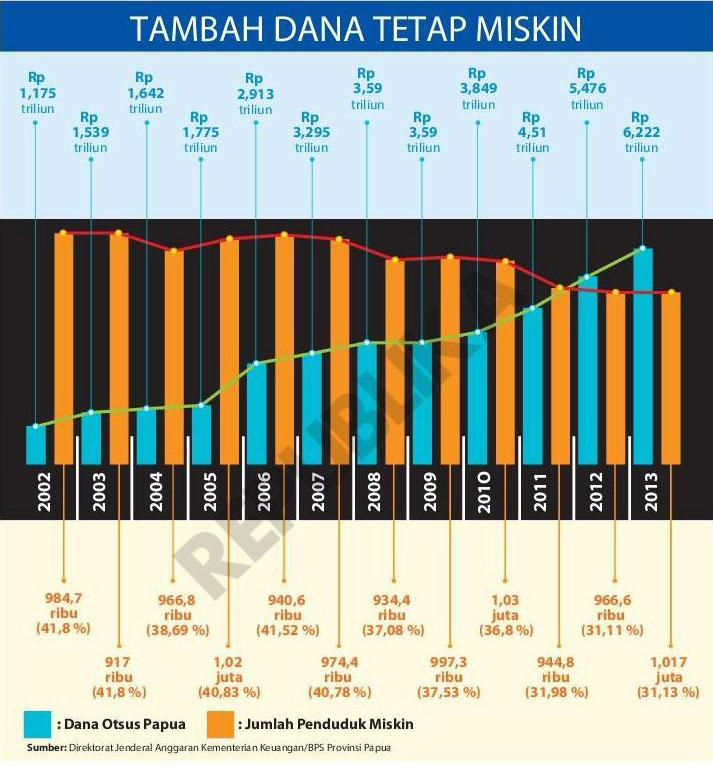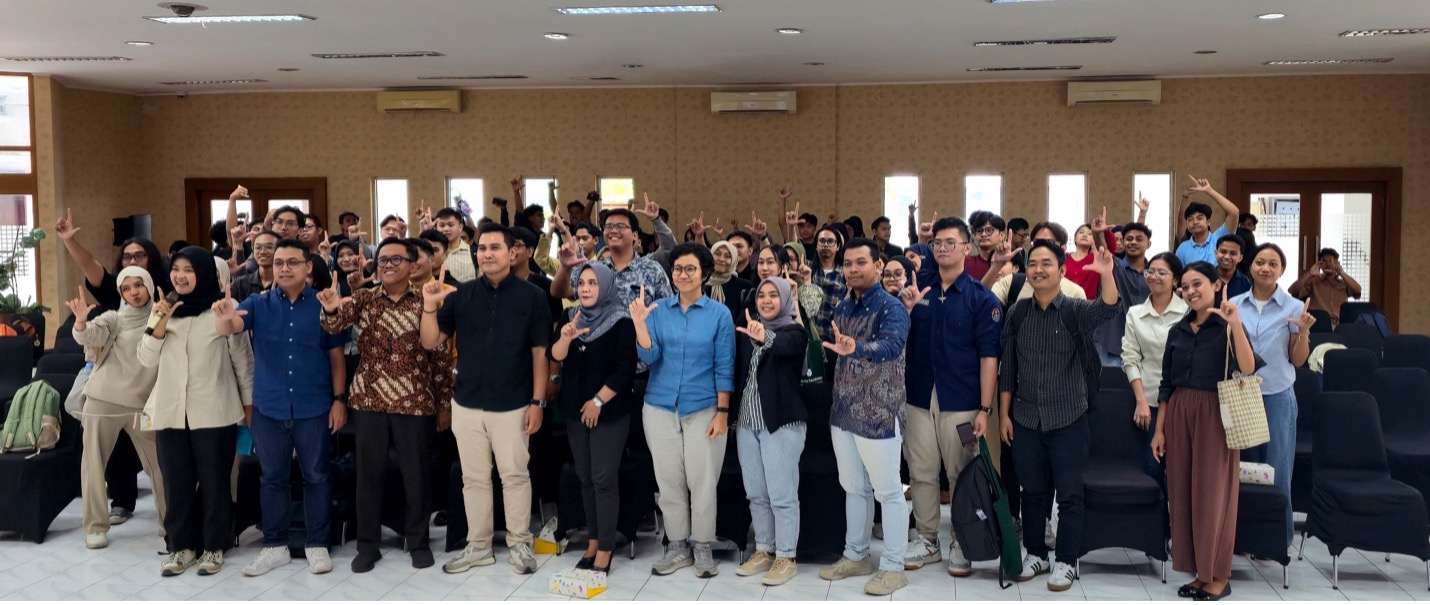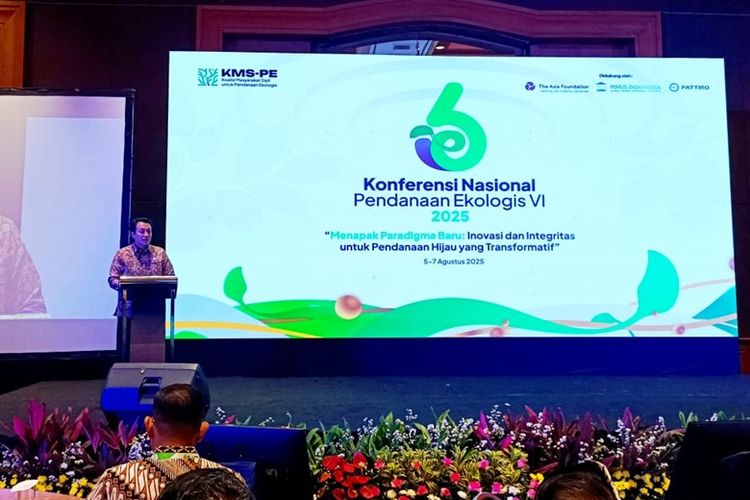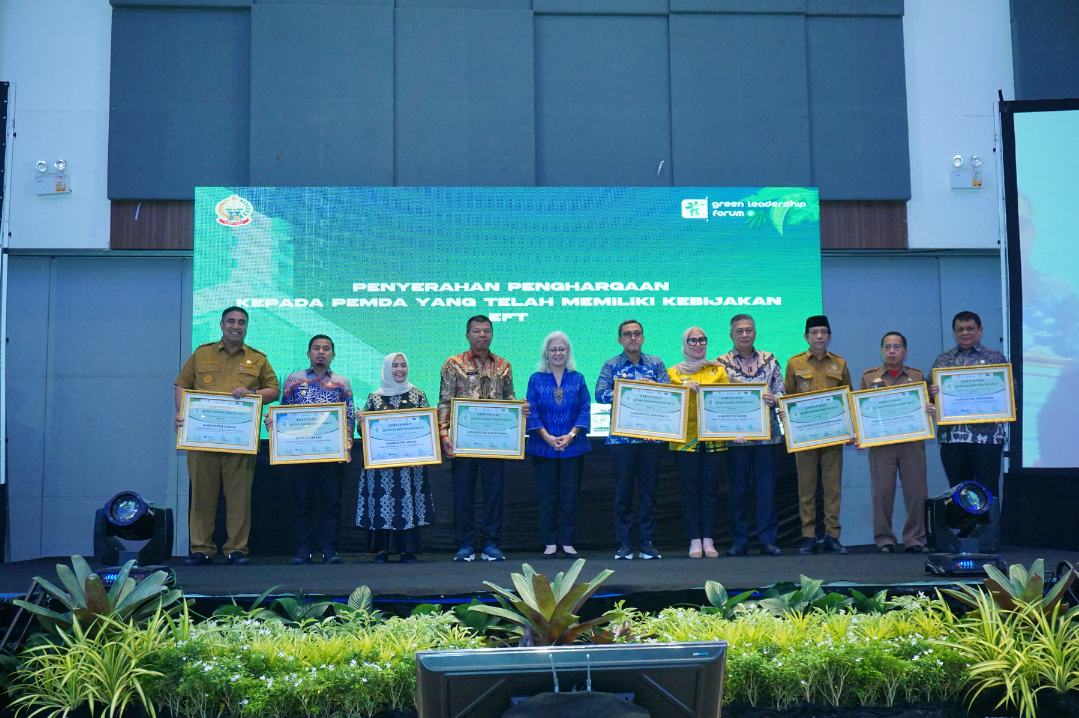Indonesian governments are urged to open up the disserted and isolated areas to address poverty in Papua.
 JAKARTA – Special Autonomy Fund (Dana Otsus) in Papua which has allocated by central government in the frame of State Budget (APBN) continue to be improved. However, the addition funds was not correlated with a decrease number and percentage of poor population in Papua.
JAKARTA – Special Autonomy Fund (Dana Otsus) in Papua which has allocated by central government in the frame of State Budget (APBN) continue to be improved. However, the addition funds was not correlated with a decrease number and percentage of poor population in Papua.
Since the implementation of special autonomy in 2001, the central government as a whole has spent Rp 33.7 trillion for Papua. Even so, based on data from the Central Bureau Statistik (BPS) in Papua province, the number and percentage of poor people is still the highest in Indonesia.
In 2001, the number of poor was recorded 1, 14 million or 54.75 percent. While, pacta 2013, the number of poor totaled 1, 01 million people or 31.13 percent.
“Actually, Papua was included as the rapid poverty reduction. Just because it’s from a high position, “said Minister for National Development Planning / Head of Bappenas Armida Alisjahbana Salsiah, last week.
She said, Papua province in the implementation of the National Development Planning Meeting 2013 was awarded as “the most rapid poverty reduction province”. However, in the last two years, the number of poor population tends to be stagnant and never lower than 30 percent. Meanwhile, the autonomy funds continue to increase from Rp 4:51 trillion (2011), Rp 5.476 trillion (2012), and Rp 6.222 trillion (2013).
In the first five years of the Papua Special Autonomy (2001-2005), the percentage of poor declined by 0.97 percent, from 41.8 percent to 40.83 percent. Whereas, in the second five years of the implementation of autonomy (2006-2010), the percentage of poor people by 4.72 percent. However, from March 2011 to March 2013, the percentage of poor declined only 0.85 percent, from 31.98 to 31.13 percent
The number of poor people in Papua in March 2013 reached 1,017 million or 31.13 percent. This increases the amount of 41 thousand people compared to the number of poor people in September 2012 which recorded 976.37 thousand people (30.66 percent). Increase in the number of poor people occurs in rural and urban areas.
During the period of September 2012 to March 2013, the number of poor people in rural areas increased 37.2 thousand people (0.53 per cent) and in urban areas increased 3.8 thousand people (0.3 percent). Overall, the number of poor people in rural areas by March 2013 amounted to 965.46 thousand people (39.92 percent) in urban and 51.9 thousand people (11.6 percent).
The poverty line in rural areas in March 2013 recorded Rp 298.395 trillion whereas in urban areas for Rp362.401. That means the cost to meet the minimum needs of decent living (basic needs) for food and non-food higher in urban than rural areas.
Armida added, essentially the addition of special autonomy fund is not directly correlated with the decrease of poor percentage. It is not separated from the lack of transparency in the use of special autonomy funds.
He welcomed the governor’s plan to drain 80 percent of Papua special autonomy funds directly to districts / cities and 20 percent to the province. “As long as this is not the case,” Armida said.
Armida said the accelerated development of the government is the solution. For example, for the simple aspects of public works, such as roads.
No Fundamental Allocation
Papua Governor Mr. Luke Enembe as confirmed on increased autonomy funds associated with an increase in the number and percentage of poverty, He asked back. “ how much the increase funds? Just a little, not much increased. Papua covers 30 counties, “said Luke.
Luke Enembe said, implementation of special autonomy in Papua has not touched the fundamental problems. Looking ahead, provincial officials promised to focus on the development of education, health, and economy. “It needs to be setup. Because, many years (execution autonomy) is not passed to it. As if nothing happened there, “said Luke.
Members of the monitoring team of Special Autonomy in Aceh and Papua Province House Irene Manibuy said, reduction in the number and percentage of poor people in Papua can only be realized if the remote and rural isolation is opened. Urban and rural areas should be connected. “That’s the key point,” said Irene told Reuters on Sunday (7/7).
Irene explained, due to there still an isolated areas, transportation of goods to be a stunted. He cited the connecting road between the two regions is relatively advanced, the Jayapura to Wamena, which can not be passed by either.
This legislators Bintuni born said, transportation by aircraft impacts on the high price of goods. As a result, only a handful of people who can afford it, such as businessmen and government officials.
Related to the correlation on the increase of special autonomy funds with poverty reduction, Irene called autonomy has not succeeded as well as away from the expectancy. According to her, the development of autonomy by relying on insufficient funds.
Fitriyan Zamzami (quoted from Republika, Monday, July 8, 2013)




